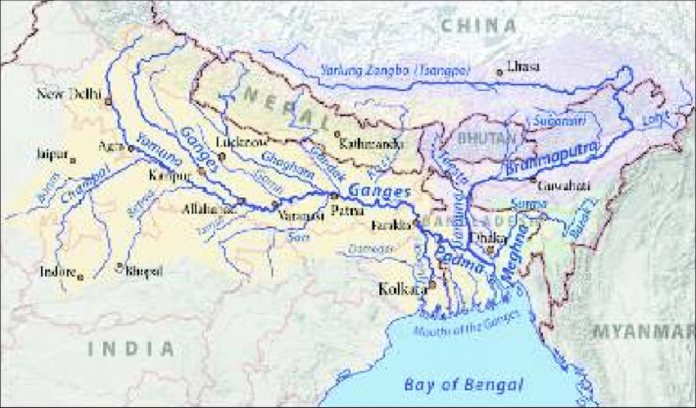DHAKA, Sept 1, 2020 (BSS) – Experts at a webinar have stressed the need for youth engagement for upscaling successful nature-based solutions across the Ganges-Brahmaputra-Meghna (GBM) river basin.
“Youth engagement is important aspect of Nature-based Solutions (NbS)” said Radhika Murti, Director of Global Ecosystem Management Programme (GEMP) of IUCN.
“NbS represents cluster of approaches, single intervention or group of people cannot realise the promise of NbS. It requires working across generations, and moving away from site-based to systems-based approach. It requires thinking about multiple societal challenges and harnessing the nature to address these challenges. The IUCN NbS Global Standard launched on 23 July 2020 tells us how to bring about this change,” she added.
The IUCN recently hosted a dialogue with Young Water Professionals on Nature-based Solutions (NbS) and it’s Application in Water Management in the Ganges-Brahmaputra-Meghna (GBM) River Basin.
More than 50 participants from across the Asia region watched it live, an IUCN press release said.
The dialogue presented IUCN NbS Global Standard and shared practical experiences from three young water professionals from Bangladesh, India, and Nepal on the application of NbS in addressing specific societal challenges such as riverbank erosion and water and food security for farmers.
In the GBM basin, more than 50 percent of its population is below 35 years of age and there has been an increasing trend in youth activism for climate action. Therefore, building the capacity of youth on the NbS implementation is important for the upscaling of the successful NbS strategies.
“Across the GBM Basin, there is a traditional practice of using locally sourced bamboo for fencing the river banks, as an erosion control strategy. These bamboo fences are referred to as ‘Bandal’ in local language. This also provides long-term improvements in the local biodiversity,” said Nuzhat Nueary, Project Officer, Transboundary Rivers of South Asia, Oxfam Bangladesh.
Sharing experiences with the implementation of NbS in Jinjiram River, a tributary of Brahmaputra River, Nuzhat said: “Bamboo fencing supplemented with plantation makes the riverbank more stable, bamboo fences divert water to the center of the river and overtime they trap the silt in the river leading to extension of the riverbank rather than its erosion.”
Kishan Khadka, Project Officer, National Environment and Equity Development Society (NEEDS) Nepal, highlighted cost-effectiveness of the nature-based solutions.
He said: “In Mahakali River Basin in Kanchanpur Nepal, engineering solutions were tried by the governments to tackle the problem of river bank erosion, however, these were expensive and short-term solutions. NEEDS worked with the local government officials and the communities to fence half a kilometer of river bank using locally sourced bamboo costing only half million Nepali Rupees. Overtime the silt deposition by the bamboo fences extended the riverbank and this new land was utilised by the local women groups to plant cash crops such as Citronella and earn extra income.”
Kavya Arora, Manager, Policy and Planning, Development Alternatives (DA), emphasised the importance of integrated watershed management and community inclusion in creating successful NbS strategies.
She said in arid Bundelkhand region of India in the Ganges River Basin, DA worked with the community-led watershed management committee to implement cluster of activities, including construction of check dams, restoration of micro-watersheds and multiple cropping to address the water and food security issues.
This led to substantial increase in farmers’ income over time due to improvements in overall water security and soil health, she added.
Online participants suggested IUCN to engage with the local university systems and the private sector on NbS capacity building, particularly on the NbS Criterion 2 (design at scale) and Criterion 8 (mainstreaming and sustainability).
The webinar highlighted the importance of balancing science with traditional knowledge to ensure the mainstreaming of NbS in river basin management policy and practice. By generating information on local context with cultural sensitivities, youth can support the localisation of global best practices, while advocating for NbS mainstreaming at local levels.
The three young water professionals, who participated in the dialogue, are winners of NbS poster competition facilitated by IUCN in June 2020. The winners will receive funding to participate in the IUCN World Conservation Congress in Marseille, France in January 2021 to share their NbS experiences with a global audience.
The online dialogue was part of BRIDGE GBM project, facilitated by IUCN, and funded by the Swedish International Development Cooperation Agency (Sida) through the Oxfam Transboundary Rivers of South Asia (TROSA) programme. Its focus is to strengthen CSO engagement in transboundary water management issues.



